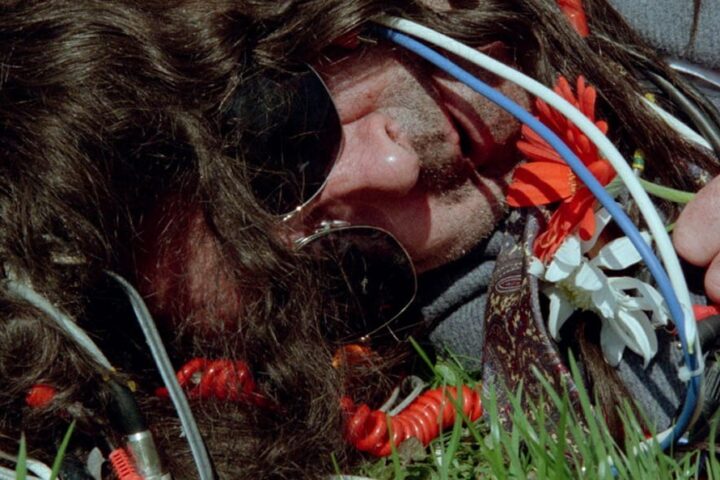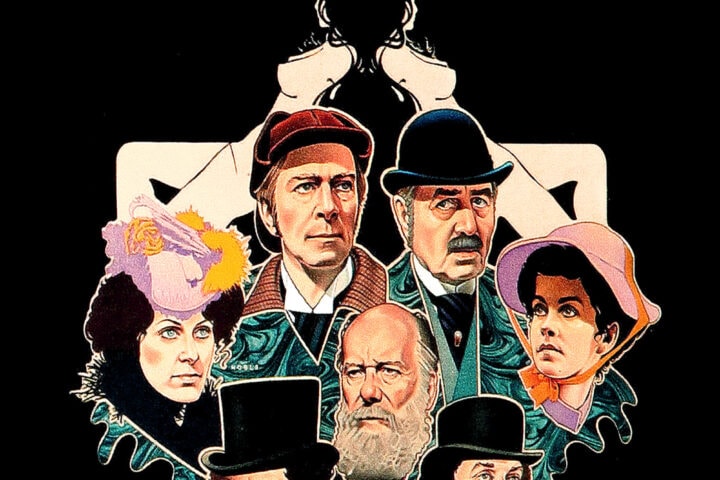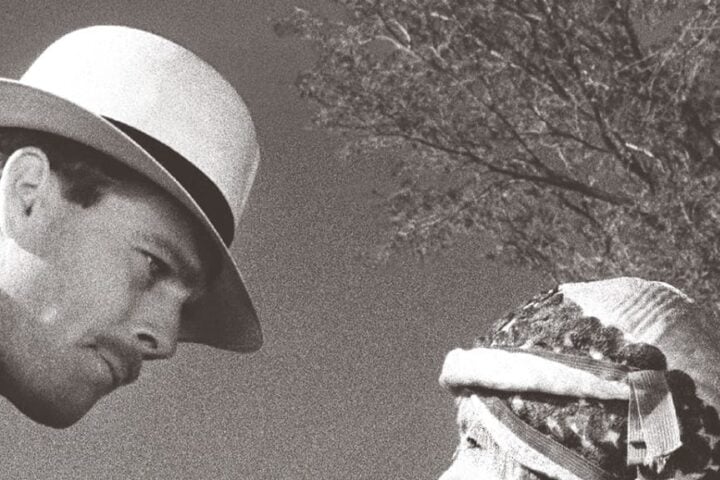Adapted from Nathanael West’s scabrously funny 1939 novel, The Day of the Locust reunites the creative triumvirate of producer Jerome Hellman, director John Schlesinger, and screenwriter Waldo Salt, who had previously teamed up for Midnight Cowboy. Superficially, the two films would seem to be quite different. One is a contemporary tale shot documentary-style on the mean streets of late-’60s New York. The other is an exquisitely detailed period piece filmed largely on Paramount soundstages in L.A. Midnight Cowboy favors gritty realism, while The Day of the Locust descends into a kind of deranged surrealism. But the films are linked since they both focus on loners and outcasts, salaciously prod the seedy underbelly of their milieus, and expose the unforgiving flipside of the American Dream.
The biggest difference between the two films is that Midnight Cowboy mitigates its ultimately tragic denouement with a certain tenderness between its damaged protagonists. The Day of the Locust conversely contains precious little in the way of human warmth, its characters largely a gallery of grotesques akin to the ghastly faces that come to adorn the walls of the apartment rented by art school graduate Tod Hackett (William Atherton). The film cleverly uses the apartment complex where Tod lives as a hub for its marginalized characters, most of whom are in some tangential way involved with Hollywood’s dream factory.
The Day of the Locust is concerned with portraying L.A. as “a Mecca of broken dreams,” as a ballyhooing tour guide puts it early on. This is a place where aspiration steadily shades into the delusional. Tod hopes to make it as an art director, but his efforts culminate in an all too literal disaster. Background artist Fay Greener (Karen Black) yearns for stardom—or, at least, to marry a rich and “dangerously handsome” man—but she ends up as a sex worker and kept woman. Her father, Harry (Burgess Meredith), a former vaudevillian star, falls to the level of eking out a living as a snake oil salesman. And, most pathetic of all, lumpen Homer Simpson (Donald Sutherland) suffers degradation upon humiliation until he snaps in a fit of homicidal rage.
Of course, The Day of the Locust is hardly the first Hollywood movie to cast a cold eye on the film industry; it’s a time-honored tradition that stretches at least as far back as George Cukor’s 1932 melodrama What Price Hollywood?, the blueprint for every later iteration of A Star Is Born. But Schlesinger’s film cheekily abjures the usual fictionalization, freely availing itself of Paramount Pictures’s famed front gate and soundstages. (It’s hardly surprising, then, that studio head Robert Evans was steadfastly opposed to making the film in the first place.) Schlesinger doubles down on film historical matters when he sets the climactic riot during the premiere of Cecil B. DeMille’s Paramount production The Buccaneer at Grauman’s Chinese Theater, which took place in February 1938, thus tidily timestamping the film.
And that’s not the only way that The Day of the Locust toys with the film medium. At one point, Tod, Fay, and ersatz cowboy Earl Shoop (Bo Hopkins) attend a screening of an Eddie Cantor comedy, Ali Baba Goes to Town, to witness Fay’s fleeting appearance as a lovelorn harem girl (Karen Black is ingeniously inserted into the Cantor film.) As the trio exit the theater, a newsreel showing one of Hitler’s speeches can be glimpsed, lending Schlesinger’s film a foreboding sense of things to come that was absent from West’s novel. Elsewhere, Tod and bon vivant art director Claud Estee (Richard Dysart) attend the screening of a stag film at an upscale bordello. When the film breaks midway, it’s a wryly funny bit of coitus interruptus.
Sex is a roiling cauldron throughout The Day of the Locust, and every so often it spills over into shocking acts of violence. This is never clearer than in the scene where Tod and Fay visit Earl at the hillside camp he shares with cockfight enthusiast Miguel (Pepe Serna). Fay and Pepe begin to dance wantonly while Earl sits there knocking back liquor and beating time with a tree branch, until he can’t stand it anymore and takes the branch to Pepe’s head. Just then, Tod chases Fay down, threatening to rape her on the spot. Only a lingering sense of shame and a kind of existential exhaustion prevents him from doing so.
We’re never told so in the film, but in the book the title of the painting that Tod works on over the course of the story is The Burning of Los Angeles. So when the climactic riot and looting turns apocalyptic—there’s something beautifully surreal about the sight of a palm tree collapsing in flames—it’s unclear where events end and Tod’s fevered imaginings begin. The book ends on a perfect note with Tod’s screams merging into the wail of a siren. Salt’s script makes its one serious slip by tacking on a coda where Fay returns to Tod’s abandoned apartment, gazing wistfully at a rose tucked into a crack in the wall. It’s a sentimental sop that undercuts Schlesinger’s remorseless descent into the heart of Hollywood’s darkness.
Image/Sound
Sourced from a 2K scan of the original camera negative, the new transfer of The Day of the Locust looks quite striking, a marked improvement over Paramount’s 2004 DVD. Colors are more vibrant. There’s an increase to the clarity of fine details. Black levels are deep, but the grain gets a bit thick during some of the darker and nighttime scenes. Audio comes in three options: Master Audio mono, stereo, and 5.1 surround. The stereo track opens up the film’s soundscape slightly compared to the mono, and the surround mix really only kicks in with full force during the climactic riot scenes. All thee tracks nicely handle John Barry’s alternately lovely and menacing score, bolstered by lots of period-specific needle drops.
Extras
The lively commentary track, conducted by film historian Lee Gambin and including contributions from quite a few cast and crew members, provides a comprehensive oral history of The Day of the Locust that covers practically every conceivable aspect of the film’s production history. It’s a compelling, often fascinating listen. Gambin also contributes a densely packed visual essay that analyzes the film’s characters, themes, and its affiliations with the horror genre.
Critic Glenn Kenny discusses the life and career of Nathanael West, the book’s reception from L.A. writers, John Schlesinger’s earlier films, and Paramount studio head Robert Evans’s resistance to the production. Costume historian Elissa Roses examines designer Ann Roth’s contributions to the film, complete with snippets of an audio interview with Roth. Rounding out the package are image galleries that feature some exclusive BTS pictures from production associate Michael Childers and assistant camera operator Ron Vidor.
Overall
With impeccable detail and merciless wit, John Schlesinger’s The Day of the Locust presents 1930s Los Angeles as a nightmarish circle in Dante’s Inferno.
Since 2001, we've brought you uncompromising, candid takes on the world of film, music, television, video games, theater, and more. Independently owned and operated publications like Slant have been hit hard in recent years, but we’re committed to keeping our content free and accessible—meaning no paywalls or fees.
If you like what we do, please consider subscribing to our Patreon or making a donation.



